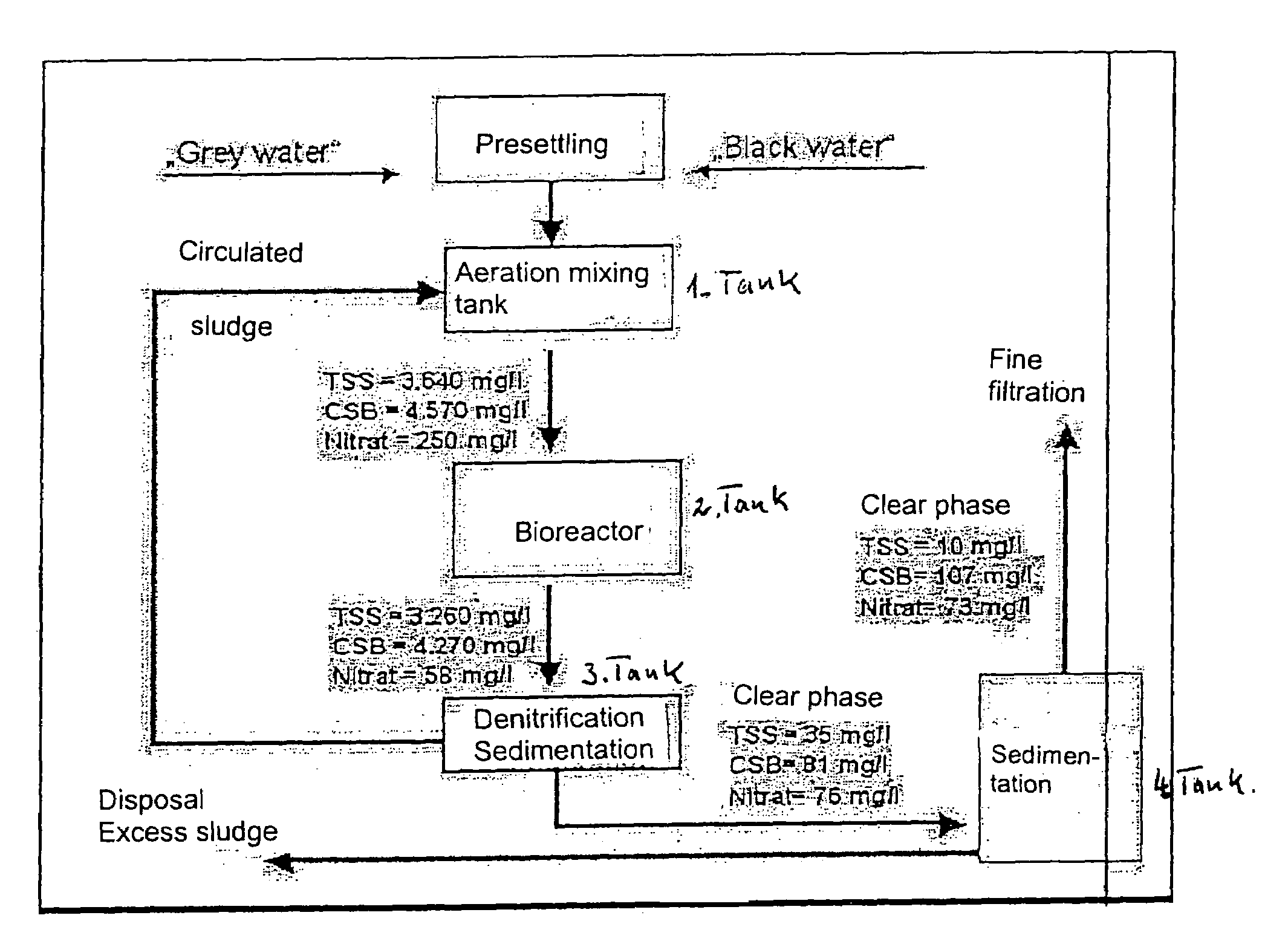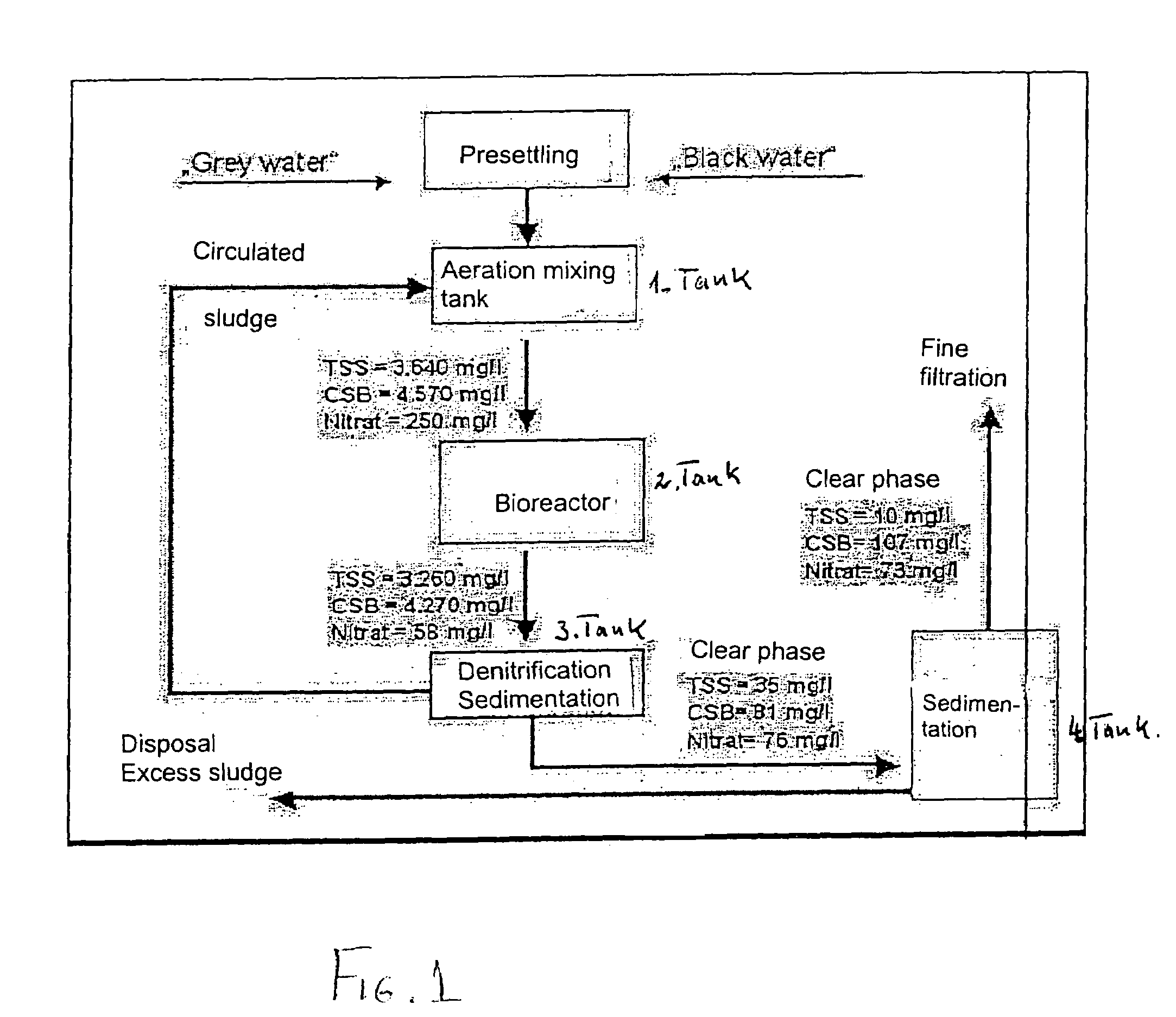Process and assembly for the treatment of waste water on ships
a technology for treating waste water and ships, applied in water treatment parameters, auxiliaries, water/sludge/sewage treatment, etc., can solve the problems of subjecting waste water to a biological clarification process, difficult to adapt to the amount of waste water being produced, and insufficient breakdown of nitrates in such clarification processes
- Summary
- Abstract
- Description
- Claims
- Application Information
AI Technical Summary
Benefits of technology
Problems solved by technology
Method used
Image
Examples
Embodiment Construction
[0021]In the process according to the invention, waste water is pretreated by surface filtration. This is carried out, for example, by waste water under pressure being pressed through a screen, a filter fabric or the like, whereby coarse solid particles, for example hairs, fibres, plastic particles and coarse solids are removed. The filter cake can then be disposed of in a suitable manner, for example by incineration.
[0022]The waste water is continuously fed from the first tank into a bioreactor. The bioreactor comprises a second tank in which an aerobic waste water treatment takes place. By this is understood the reduction of the dirt load of waste water by aerobic digestion of organic compounds with the aid of micromechanisms and microorganisms (aerated sludge) with the aim of extensively reducing the oxygen consuming compounds. Organic substances are metabolised by forming carbon dioxide, water, nitrates and sulphates by means of organisms involved in the digestion process. To su...
PUM
| Property | Measurement | Unit |
|---|---|---|
| opacity | aaaaa | aaaaa |
| volume flow | aaaaa | aaaaa |
| time | aaaaa | aaaaa |
Abstract
Description
Claims
Application Information
 Login to View More
Login to View More - R&D
- Intellectual Property
- Life Sciences
- Materials
- Tech Scout
- Unparalleled Data Quality
- Higher Quality Content
- 60% Fewer Hallucinations
Browse by: Latest US Patents, China's latest patents, Technical Efficacy Thesaurus, Application Domain, Technology Topic, Popular Technical Reports.
© 2025 PatSnap. All rights reserved.Legal|Privacy policy|Modern Slavery Act Transparency Statement|Sitemap|About US| Contact US: help@patsnap.com


